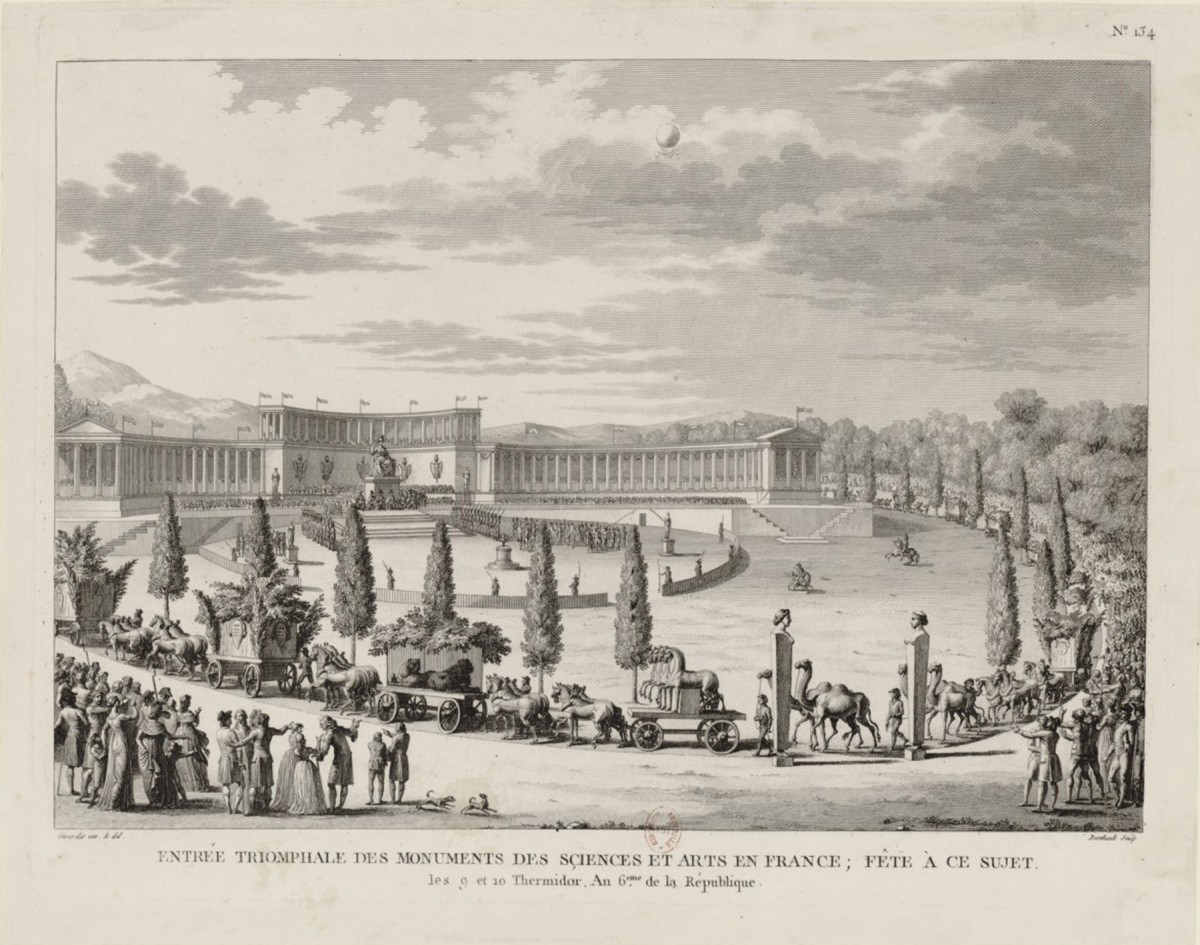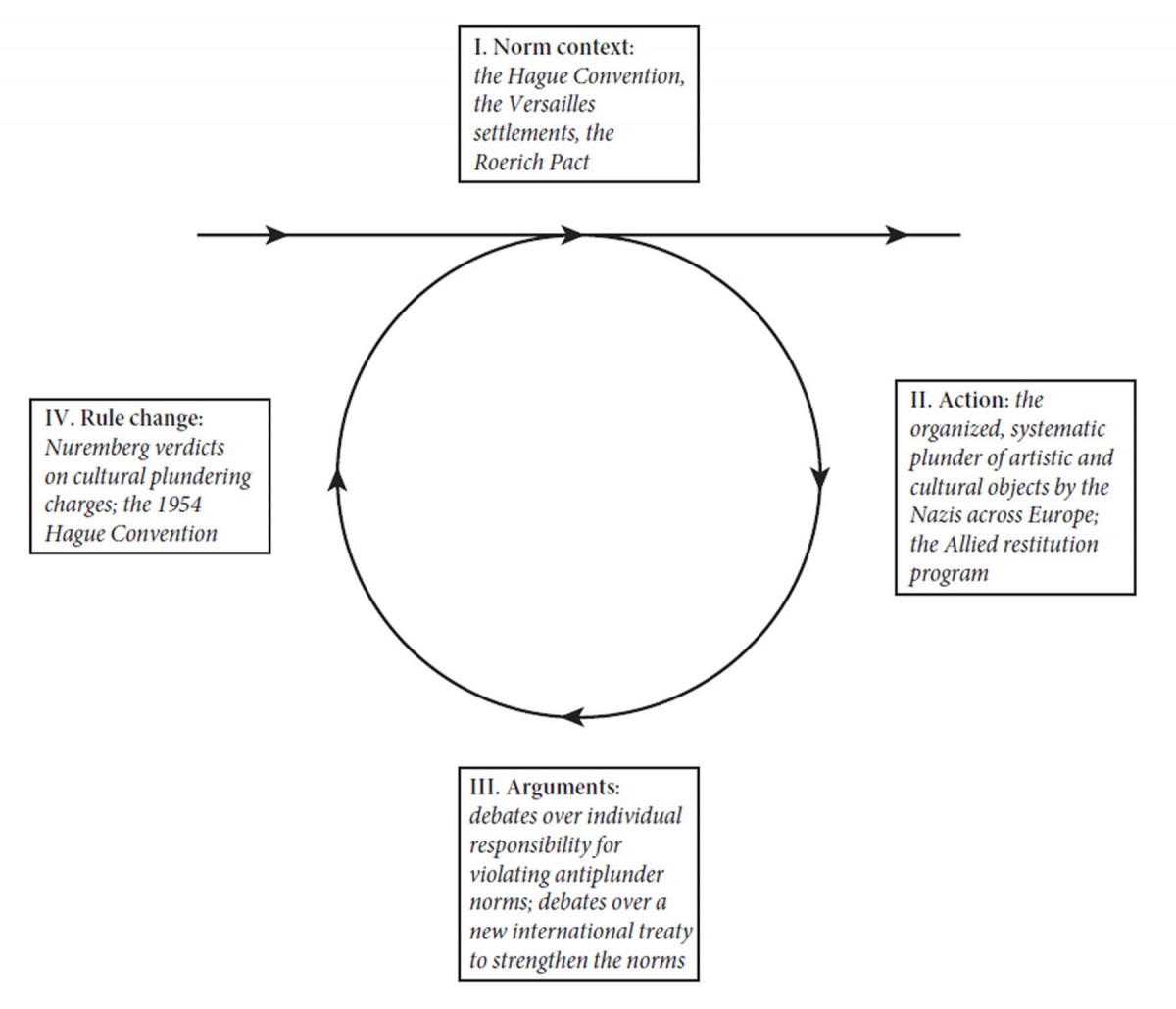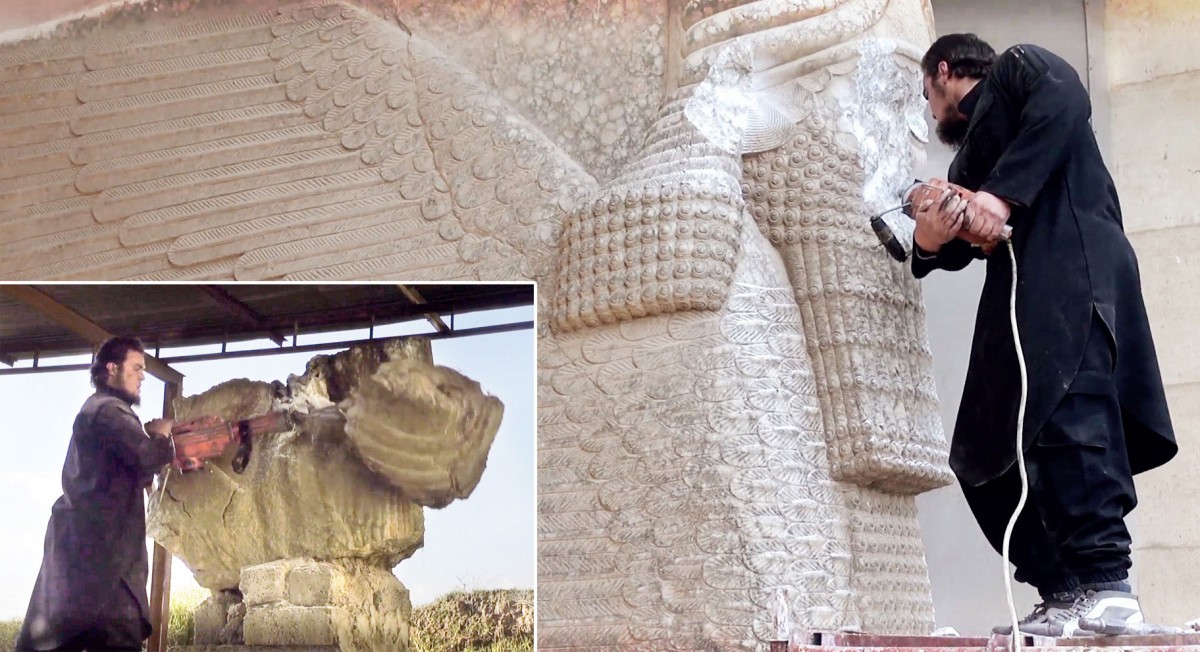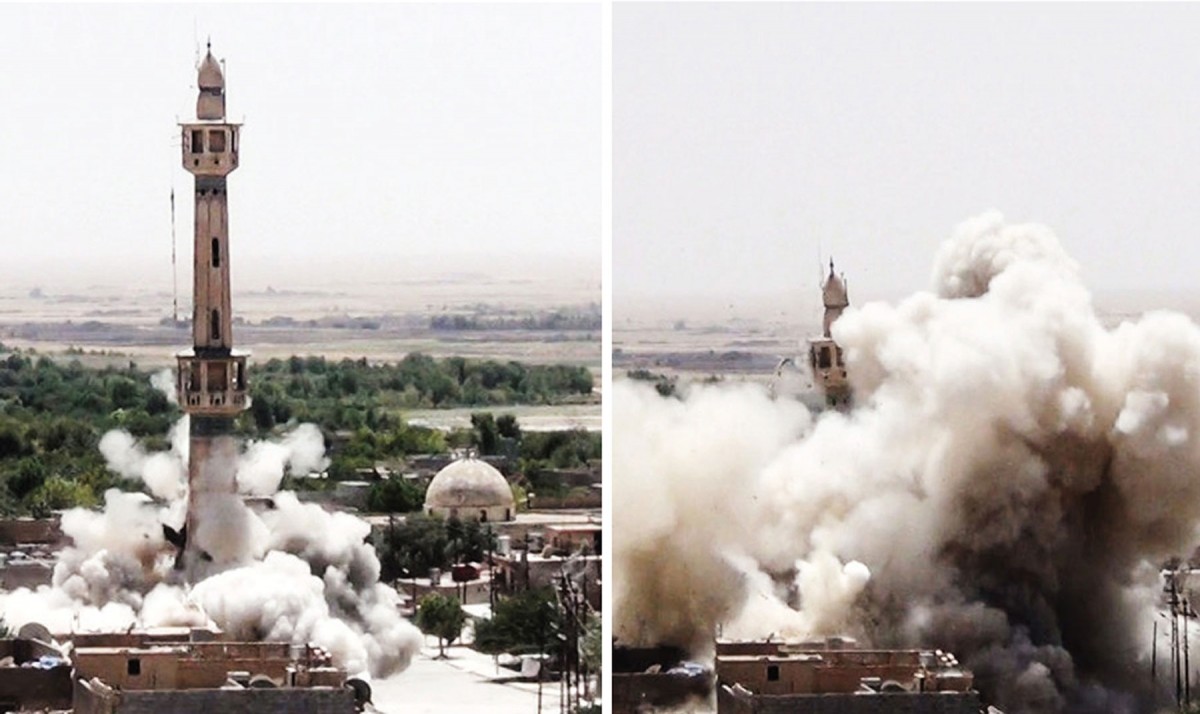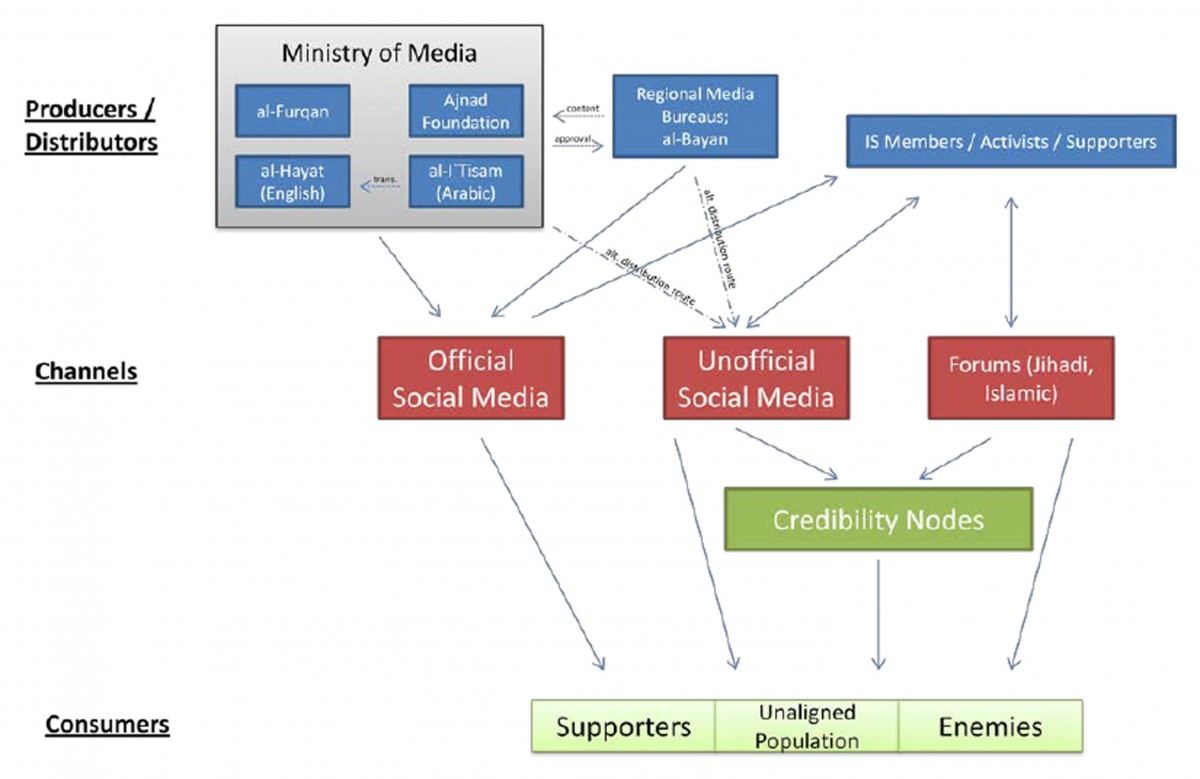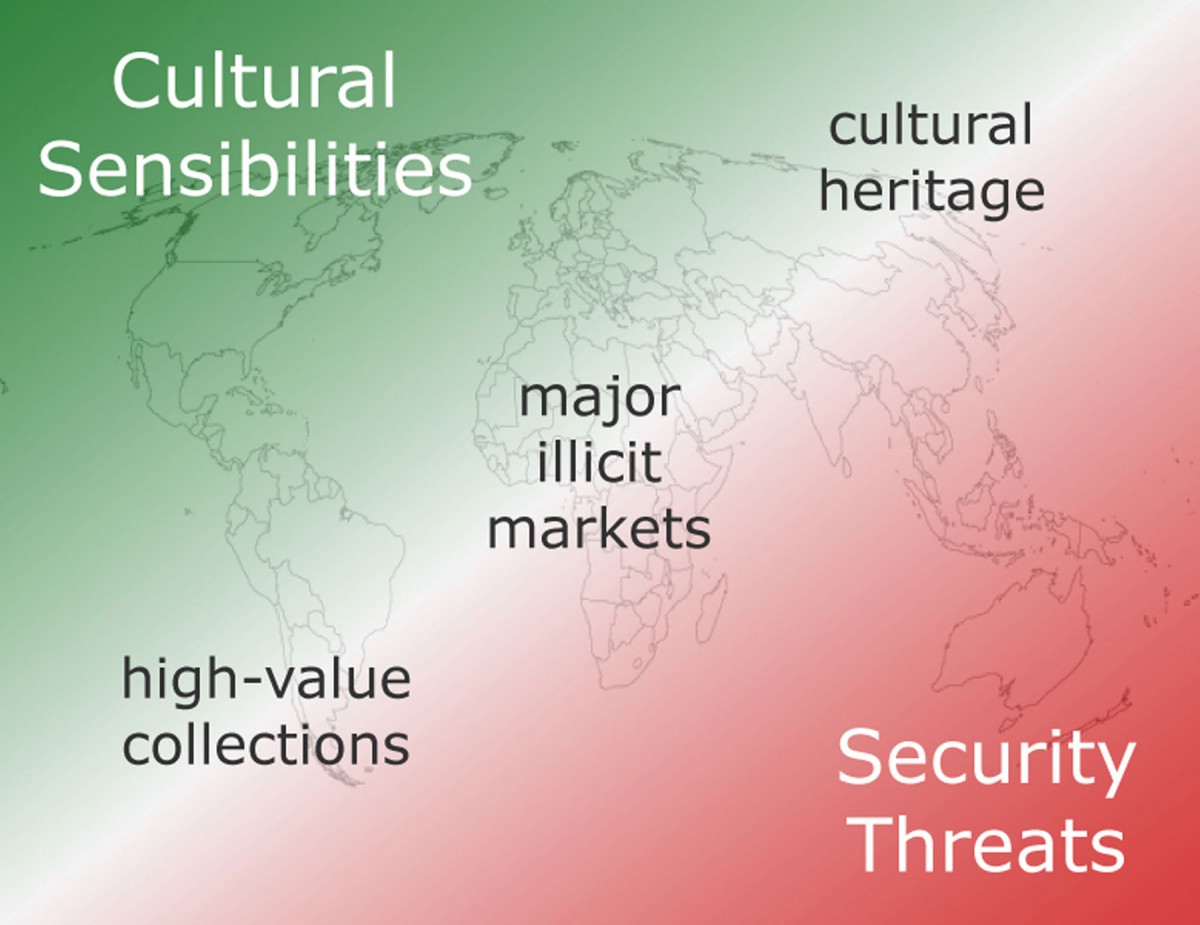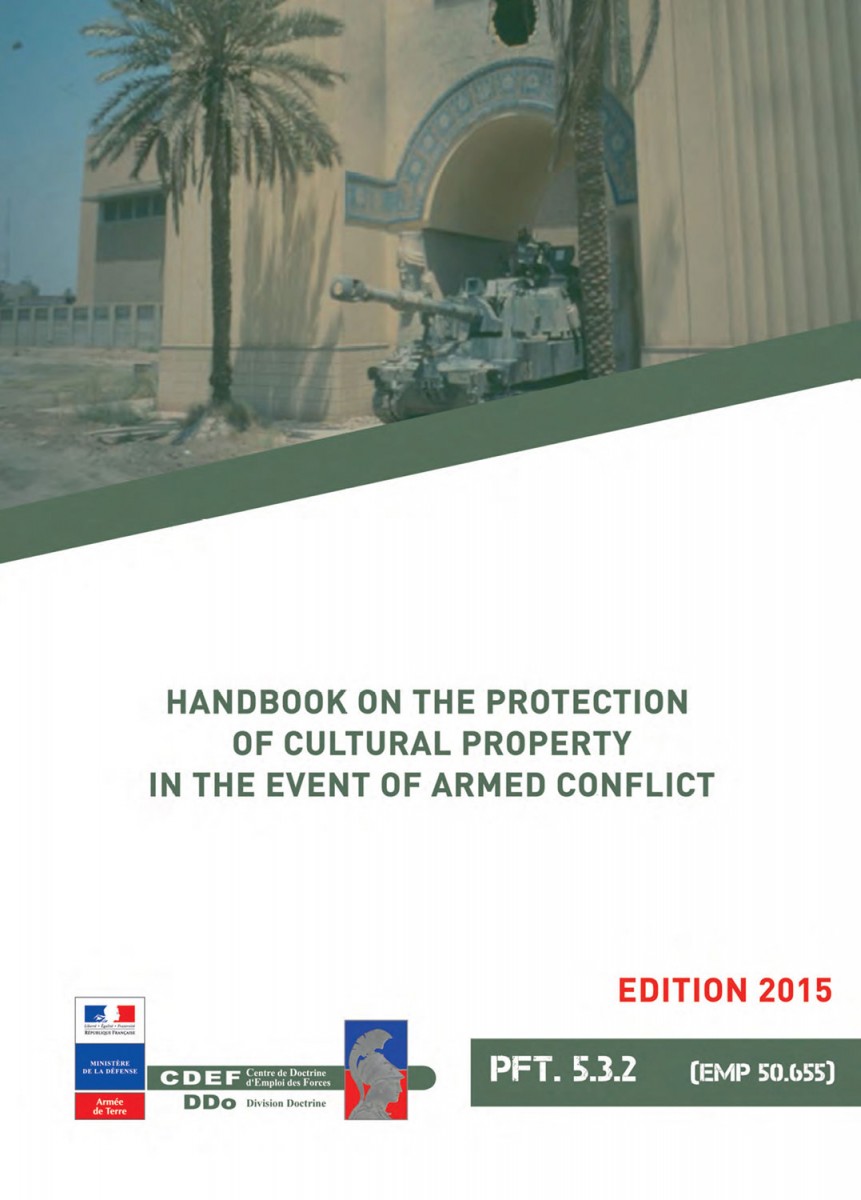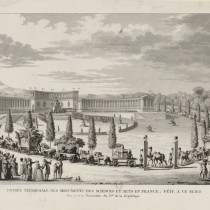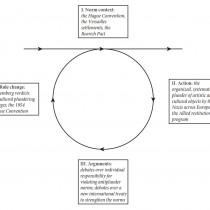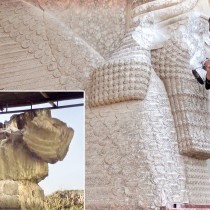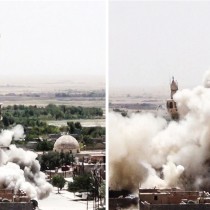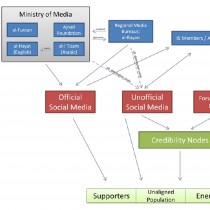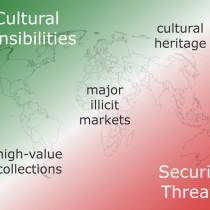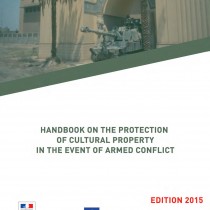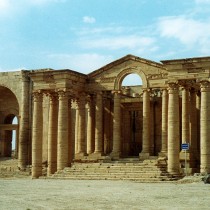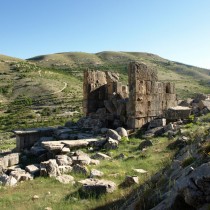ISIS (Islamic State of Iraq and Syria) systematically destroys monuments in Syria and Iraq, continuing the practice of the Taliban who, in 2001, blew up the Buddha statues in the Bamiyan valley, Afghanistan. On the other hand, it plunders and trades works of art for its own benefit, continuing the practice established in the region after the 2003 invasion of Iraq by the American British coalition. The International community perceives the above as a threat to national security, incorporating the protection of cultural heritage in the sphere of the United Nations Security Council (UNSC).
In the first part of the article we shall explain a) the evolution of cultural property from victory spoils to an instrument of war and b) the evolution of destruction and looting from being the victor’s right to becoming a war crime. Our aim is to show how perceptions change on the value of cultural goods in armed conflict, establishing standards in values and uses.
In the second part we shall analyze how ISIS capitalizes on cultural property in its strategic planning. We will argue that it exploits cultural heritage as an internal available resource, to win the war and build a state, and not only as important loot acquired from conflicts. Consequently, the destruction and looting of antiquities is part of its military and political planning.
In the third part, we will describe a) how the international community perceives the threat posed by ISIS in the looting and destruction of cultural property, and b) how it incorporates their protection under international security. We will argue that it perceives it as a threat to the latter because it connects it to the strengthening of terrorism, the weakening of human rights and the humanitarian crisis.
In the fourth part we will assess a) how ISIS develops instruments of war, and b) how the international community develops the norm for the protection of cultural heritage. We will argue that today, ISIS strategy and the international community’s response create another milestone in the evolution we noted in the first part of the article.
Cultural property in times of war: Use and protection standards
From loot to instrument of war
Until the Second World War, cultural property played an important role as spoils of the victor, after the end of the war. Since then, it has become a means by which to win the war (note 1).
Three historical examples established robust standards for use of cultural property in times of war.
Roman triumphs, the big parades in honour of the victor, that crossed through the center of Rome festively exhibiting “tokens of war”, which included works of art, established the prototype of a victory celebration (note 2) as they were repeated over 300 times during the period of Roman rule and established the customary norm of ” the winner takes all” (note 3).
Incorporating works of art as prominent loot in the victory celebration, constitutes plunder as symbolic (note 4). It was primarily useful in increasing authority and its message was the change of cultural power relations, in this case with Greece. It took place in a permissible sociocultural environment, since works of art were included in the general concept of looting, which was within the rights of the victor.
Napoleonic plunder (note 5) continued the tradition of Roman triumphs, as shown by the solemn entry of Napoleon into Paris, in 1798. The difference was that, having conquered Europe, Napoleon carried out systematic looting on an unprecedented scale and characterized by the following: its range, the fact that it was planned from a centre, that organized bodies of intellectuals were mobilized to oversee the registration, classification and safe transportation of the works to the Louvre and that Napoleon legalized the transfer of ownership of works of art, through binding conditions in the peace treaties concluded with the Italian cities and the Pope.
Napoleonic looting was also symbolic, since its aim was to increase the prestige both of France and Napoleon and its message was that the relationship of cultural strength had changed in regards to European states, with Paris taking the political and cultural place of Rome. Moreover, it was happening within a permissible sociocultural environment: the custom in ware fare of “winner takes all” was in force and strongly supported by the intellectuals of the time, according to whom exhibiting the works in French museums would train the French in the values of the Republic, proving the latter’s superiority over the European monarchies, as arts and sciences were the crowning achievements of victory and freedom.
In the Second World War, looting was combined with systematic destruction of cultural property and became an integral part of the Nazi strategic plan of victory, already prior to the start of the war. The regime recruited art historians (note 6) in intelligence operations, to determine art criteria representing the German spirit, identify suitable works in countries and target groups and guide the army in its looting, according to predefined criteria.
Nazi looting was symbolic, strategic and selective at the same time, as part of a wider political and military project, which combined (note 7) the looting and destruction of monuments belonging to specific groups and nations, along with deportations and mass executions. It had a dual purpose; namely to “implement” the ideology of the supremacy of the German spirit, by returning works of art to their natural political and cultural center, while depriving nations and groups their tokens of identity and historical connection to their conquered territory. A precedent to this practice had already existed since 1915, with the destruction of culture, the mass purges and deportations of Armenians and was to be repeated later in the wars of Yugoslavia.
From right of the victor to a crime of war
After Napoleon’s defeat, a regulatory framework (note 8) began to be created regarding the army’s behaviour towards monuments. It was limited, however, and not sufficient enough to prevent the massive catastrophes caused by the Second World War.
Consequently, the winners of the Second World War changed the norm, first with the Nuremberg Trials, where it was determined that the deliberate destruction of monuments constitutes a war crime and the principle of criminal liability was established, assigned not only by the governments of the criminals, but by the international community itself (note 9). The Nuremberg Trials created a model for international courts, as that of former Yugoslavia and the International Criminal Court, by which a shift was established in the perception of acceptable behaviour towards cultural property in times of war (note 10).
Next, the winners of the Second World War changed the norm by forming UNESCO, an international organization, dedicated among other things to the protection of cultural property. With the 1954 Hague Convention for the “protection of cultural property in time of war,” UNESCO introduced a new concept (note 11). According to it, the destruction of a people’s cultural property is first of all the destruction of the cultural heritage of all mankind (see Introduction) which must be protected at an international level. This global approach extends the idea of protection beyond national interest, because heritage interests all of humanity.
Consequently, the concept of the threat to the cultural heritage of humanity began to be formed. At a national level, the Convention binds the committed states to introduce the following measures into their domestic law: preventive protection measures in peacetime (article 3), special protection in wartime (articles 4, 8), the obligation of the victor to protect cultural property in cooperation with the loser (article 5), to make provisions in their military regulations for the protection of cultural property in wartime (articles. 7, 25), to take all necessary measures in criminal or disciplinary proceedings and impose penalties on offenders of the Convention (article 28).
The role of cultural goods in the ISIS plan
ISIS controls large parts of Syria and Iraq, countries rich in archaeology, as well as other areas in the Middle East, Africa and Asia, through groups that have already declared allegiance to its leader, Abu Bakr al-Baghdadi, and are acting on his behalf (note 12). Therefore, ISIS has the ability and the opportunity to plunder cultural goods in areas controlled by it. Judging by the result, this is also its intention, making it a recognizable threat (note 13).
Why does ISIS destroy and plunder?
In the territories it controls, ISIS does not wish to appropriate artworks in order to raise its prestige, or does it wish to make Raqqa the cultural capital and fill museums with pre Islamic or Shia art. Al Baghdadi is not interested in becoming a patron of the arts, as were Hitler and Napoleon. Neither does he wish to build a secular state with nationwide values, as tried by Bashar al-Assad and Saddam Hussein, with their policy of national museums (note 14).
What is more, he is certainly not interested in the regulatory norms for the protection of cultural heritage, as endorsed by the Western powers. Next, we will show that ISIS is interested in exploiting cultural assets in its strategic planning, so as to ensure its operational effectiveness, expand its influence and build a state.
Inclusion in operational planning and designs for expansion
First, ISIS treats the cultural heritage of Iraq and Syria as prominent loot from the conflicts, which however it does not appropriate, but gleefully destroys. The over publicity given to this disaster by an extensive media network, allows ISIS to effectively conduct the following psychological warfare:
First, the tactics of “smoke, mirrors and false disaster” secure advance profits from its campaigns, e.g. in January 2015, ISIS threatened to destroy the ancient walls of Nineveh, news of which spread internationally. Shortly afterwards, it was falsely leaked that ISIS had actually blown up the walls. The widespread international reaction caused by this false piece of news anticipated the widespread popularity sought by ISIS, which proceeded in March to carry out its threat (note 15).
Second, the strategy of “shock, awe and blame” cause their opponents to fall into their own traps: e.g. deliberately spreading devastating images of the destruction of monuments through social networks, in order to cause the enemy to overreact (wrath of Western powers). The subsequent resounding condemnation of ISIS by UNESCO and the western powers, serves the former’s purpose to highlight the latter’s inability to stop it (note 16).
By over publicizing the destruction of monuments, ISIS extends its influence and operational capability, through approaching recruits as follows: using social networks, it sends out a message about the bombing of an archaeological site, or a punishment message to the infidel and their corrupt regimes, addressed particularly to those with feelings of alienation (note 17), who no longer identify with the basic values of their societies (note 18). With the latter, ISIS develops bonds of solidarity and ideological commitment to the common cause of the caliphate, where the symbols of the infidel and their corrupt regimes have no place.
The spectacular destruction of antiquities in a perfectly staged performance are awe inspiring, effectively conveying the message and intensifying commitment. Consequently, the provocative display of the destruction of monuments has an effect: a) locally, surrounding ISIS with the glory of invincibility and weakening any resistance as it advances into new territories, b) on the periphery, enhancing the feeling of success in emerging movements in neighbouring countries, c) internationally, by attracting recruits, prompting some to act in the territories of the caliphate and others individually in their own countries (note 19).
Inclusion in the design for building a state
Finally, the disasters and looting as such are used in the design for building a state through “cleansing”, a process that is consistent with the salafi ideology of ISIS (note 20).
First, cleansing of foreign influences: by leveling the symbols of its opponents, ISIS removes both distracting reminders for its indigenous believers, threatening reminders for those foreign fighters struggling for its goals (note 21) and reports that attract international publicity or unwanted tourists (note 22).
Second, settling of sectarian (note 23) claims: ISIS destroys Shia monuments, because it considers the Shiites heretics, allies of the Assad regime and, finally, because it believes them to be allies of Iran and the USA, since after Saddam Hussein’s fall, the Shiites became active mainly in Iraq, displacing the previously dominant Sunni community. It destroys monuments of minorities such as the Armenians and the Orthodox, because it considers them infidels and allies of Assad and the West. Last, it destroys the monuments of “Western civilization”, such as Palmyra, but also pre Islamic monuments and collections, because they represent unworthy cultures (note 24) and express secular and corrupt regimes.
Third, cleansing of precious but unwanted resources: the looting and trafficking of antiquities serve the triple objective of building a state, the capacity for campaigns and expansion: on the one hand it gives the option to ISIS of “cleansing” the territories of the antiquities’ presence and on the other of gaining economically not only from their trading, but also from taxation on the findings, enforced on local looters and traffickers. Thus, ISIS establishes administrative structures of control and finances not only its struggle (equipment, wages, independence from sponsors) but also welfare structures (health and education) (note 25) in its de facto state.
How the international community perceives the threat
While the Secretary General of the United Nations (note 26) recognizes the looting and destruction of cultural goods (which finances terrorism) as one of four strategic threats posed by ISIS, UNESCO (note 27) connects this closely with the other three, i.e. violations of human rights, the expansion of ISIS and the humanitarian crisis, as follows:
The deliberate destruction of cultural heritage, combined with the violation of human rights (note 28) constitutes “cultural cleansing”, whose purpose, among others, is the deprivation of cultural rights (note 29). The aim of the deprivation of cultural rights is deleting cultural diversity and replacing it with a region that is religiously and culturally homogeneous, while contributing to the territorial expansion of ISIS. In the short term, this may increase the humanitarian crisis, creating tensions between the displaced and their host communities. In the long term, it can cause an irreversible loss of cultural diversity, making the return of populations and reintegration in their country of origin more difficult.
UNESCO concludes (note 30) that a new approach is urgently needed at an international and national level, to activate, at an operational level, the link between the protection of diversity, humanitarian action, peace-building processes and security policies.
Reactions of the international community
Τhe Secretary General acknowledged that the UN Security Council (UNSC) had to incorporate the protection of cultural heritage in humanitarian action, security strategies and peace-building processes (note 31). On the other hand, UNESCO (note 32) recognized its strategic goal was to integrate its own actions for the protection of culture in the strategies of UNSC.
The fruit of this convergence is resolution 2199/2015 (note 33), by which UNSC obliges all UN Member States to take measures that include the prohibiting of cross-border trading in cultural goods from Syria and Iraq, thereby allowing their safe return. Furthermore, UNSC calls upon UNESCO, Interpol and other international organizations to work together on implementing the resolution.
The resolution follows two forms of logic (note 34): on the one hand, the regulatory action of UNESCO for the protection of cultural heritage and on the other, resolutions of UNSC to combat terrorism. Moreover, while the protection of cultural heritage had been, to date, UNESCO’s privileged field, with Resolution 2199 it entered the regulatory sphere of the Security Council.
The implementation of the provisions of the 1954 Hague Convention for the “protection of cultural goods in times of war,” and those of the 1970 Convention, “to prevent the illicit trafficking of cultural goods”, still depends on whether State parties wish to ratify them. By Resolution 2199/2015, however, UNSC imposes, as an international legislator, a mandatory standard of conduct on the issue of looting and illicit trafficking of cultural goods, linked to the financing of terrorism (note 35).
Developments in standards of use and protection norms
ISIS systematically combines all types of looting that we examined in the first chapter and it develops them further.
The looting of ISIS is primarily economic, because it expects to profit by it (channeling an abundant valuable commodity to market countries), it is symbolic since its method of festive destruction resembling a triumph, transmits the message of the shift in power, thus increasing its authority. It is also selective, because it aims to eliminate specific ethnic and religious groups. Last, it is strategic because, along with destruction combined with other means of war, looting serves the threefold purpose of military domination, the building of a state and expansion.
In what way is it different? First, it is not an instrument of conventional war, but one of terrorism. Today, the deliberate bombing of a monument is not only part of a strategy for subordinating and eradicating local populations, but it also has asymmetrical effects at an international level, through its visibility on social networks.
The promotion of disaster shocks and terrifies the Western world which, after the Second World War, has been trained to respect and protect cultural goods, as humanity’s world heritage. Last, it attacks the authority and value system on which the victors of the Second World War have based their power.
This, in turn decisively, strengthens the norm, shifting the issue of looting and the destruction of cultural goods from UNESCO’s field to the regulatory sphere of UNSC. It also develops the norm, boosting at least three processes:
First, by including the protection of cultural assets in humanitarian operations, both through partnerships with the Red Cross (note 36) and with the peacekeepers of the United Nations (note 37), also by the evolution of the norm ‟responsibility to protect” (R2P) (note 38). Second, referral of the accountable to the International Criminal Court (ICC), through awareness of communities (note 39).This means both awareness of local communities regarding the importance of their heritage in peace-building and development of local bodies’ ability to document cultural sites and their state of conservation. Awareness is a strategic objective for UNESCO, not only in assessing the damage in post-war reconstruction planning, or for submitting punishable evidence to the ICC, but also in actively engaging individuals and communities.
Thirdly, the debate on demilitarized buffer zones for the protection of cultural goods, an old idea that has resurfaced, thus reinforcing the legitimizing framework of international humanitarian interventions (R2P) on state territory.
Summary
Prior to the Second World War, cultural goods played an important role, after the war, they were spoils of the victor, an acceptable custom till then, which served political purposes, mainly symbolic and cultural dominance in peacetime. Cultural property has since evolved into an instrument of war, which in the case of ISIS is displayed strategically, for the latter to prevail militarily, to build a state and expand its influence in unprecedented ways.
The international community, particularly after the Second World War, has decisively developed a regulatory framework for the protection of cultural goods in times of war, stating that looting and such deliberate disasters constitute a war crime. It is understood today that the above present a threat to international security, because it connects them simultaneously with the strengthening of terrorism, the weakening of human rights and the humanitarian crisis.
Vasiliki Georgopoulou
Graduate of the PSP in “Political, Economic and International Relations in the Mediterranean” of the Aegean University
